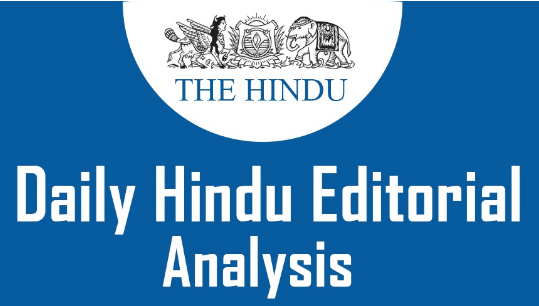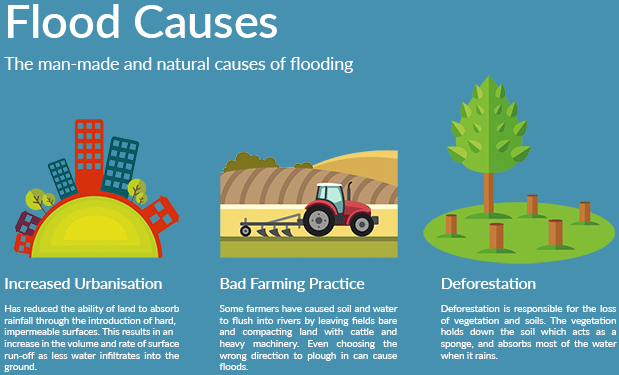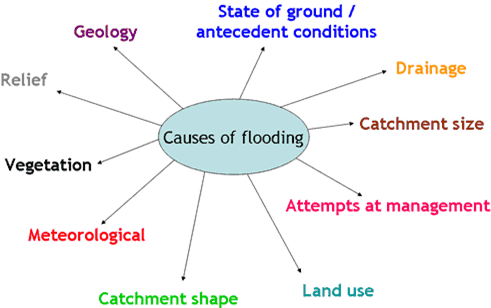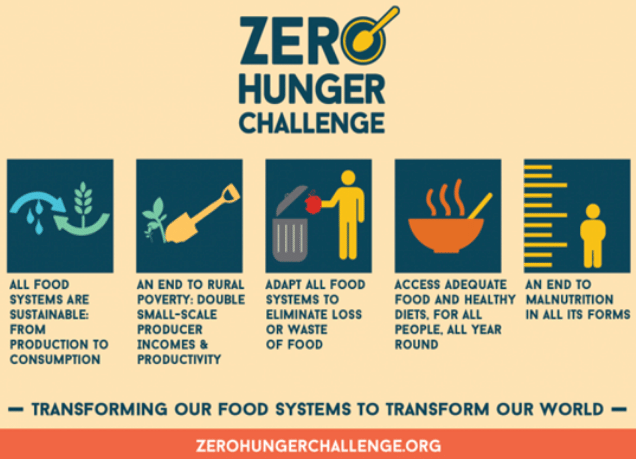The Hindu Editorial Analysis- 16th October, 2020 | Additional Study Material for UPSC PDF Download

1. DEALING WITH A DELUGE: ON HYDERABAD FLOODS-
GS 2- Important aspects of governance, transparency, and accountability
Context
(i) A deep monsoon depression over the west central Bay of Bengal, which weakened as it moved over Telangana, resulted in downpours over several districts in the State, severely affecting the city of Hyderabad as well.
(ii) On October 13, the monthly average rainfall of Hyderabad for October (103.6 mm according to Skymet) was surpassed on a single day when 192 mm of rain fell.

Rain-Related Disaster
(i) According to the India Meteorological Department, this is the highest rainfall for October recorded in Telangana’s capital since 1903.
(ii) Such a high intensity downpour in a short span is bound to affect a densely populated urban area, and Hyderabad was no exception.
(iii) At least 24 people were killed and several localities submerged and isolated following incessant(continous) rains and the overflowing of the city’s lakes.
(iv) Other districts were badly affected too: roads damaged and irrigation tanks breached.
(v) The monsoon storm that never became a cyclone, has managed to cross the east (Andhra Pradesh) and west coasts (north Karnataka and Maharashtra) of India.
(vi) This is rare and a rain-related disaster event that is difficult to plan for.
(vii) Floods and deluges, like any other disaster, disproportionately affect the poor.
(viii) Disaster management agencies have managed to limit the impact of the disaster as many of those marooned(trapped) in submerged areas and flooded houses were rescued.
(ix) But the extent of the damage and the turmoil(disturbance) show a lack of preparation and disaster mitigation, a problem that plagues most urban centres in the country.

Remodelling Drainage System
(i) Much of the damage was due to the overflowing of lakes — in particular, the Hussain Sagar Lake in the middle of the city and the breaching of storm water drains.
(ii) Construction over lake beds and encroachments(intrusion) of drainage channels have been identified as problems that have exacerbated(worsened) flooding and inundation(flooding) in the city in the past (the deluge in August 2000, for example).
(iii) But the little that has been done to unblock existing storm drains over the last decade has not been enough to handle the requirements of the city, which still depends upon an antiquated(outdated) sewerage and drainage system.
(iv) Hyderabad urgently needs to expand and remodel its drainage system.
(v) Besides lakes and canals, wetlands and watersheds play a vital role in absorbing excess rainfall, but regrettably, rapid urbanisation in the twin cities has resulted in the loss of a large portion of the wetlands.
(vi) An analysis by the Centre for Science and Environment in 2016 revealed that 3,245 hectares of water bodies were lost in Hyderabad between 1989 and 2001.
(vii) In the long term, the effects of flooding due to deluges can only be mitigated(reduced) if urban planners take into account the hydro-geology of cities and ensure that construction, development and land occupation do not take place in a way that reduces the area of wetlands.
Conclusion
As floods swamp Hyderabad, the focus is on the inadequacy of drainage infrastructure.
2. THE MESSAGE IN THE PEACE NOBEL — MULTILATERALISM-
GS 2- Effect of policies and politics of developed and developing countries on India’s interests
Context
(i) It is a paradox that precisely at a time when the salience(importance) of cross-national and global challenges has significantly increased, nation states are less willing to cooperate and collaborate in tackling them.
(ii) COVID-19 recognises no national or regional boundaries as it rages(crosses) across the world.
(iii) One would have expected that countries, particularly those with technological and financial capabilities, would agree to pool their resources together to work on an effective and affordable anti-virus vaccine.
(iv) Instead, there are several parallel national efforts under way even as the World Health Organization (WHO) has put together a Covax alliance for the same purpose.
(v) There is a competitive compulsion at work which may be appropriate in economic and commercial domains.
(vi) When the lives of people are at stake, active collaboration would have enhanced our collective ability to overcome what has become a public health-cum-economic crisis.
(vii) But we live in an era when nationalist urges, fuelled by a political opportunism, diminish(reduced) the appeal of international cooperation.
(viii) As pointed out, “The post pandemic world will have no choice but to contend at last with a problem long in the making: the awful(bad) dilemma of global integration without solidarity.”

Looming Food Crisis
(i) This year’s Nobel Peace Prize to the World Food Programme (WFP) is a recognition of its role in combating hunger and malnutrition across the developing world.
(ii) But the WFP’s achievement are modest, not because it is an inefficient institution, but because it is perennially(continuous) under-funded.
(iii) But more important is the message which this award is sending to the world — that we need multilateralism as an expression of international solidarity.
(iv) It is also a warning that the novel coronavirus pandemic is reversing the substantial gains made in the fight against poverty.
(v) According to the WFP, 132 million more people could become malnourished as a consequence of the pandemic.
(vi) To the 690 million people who go to bed each night on an empty stomach, perhaps another 100 million or more will be added.
(vii) This counts for a major world-wide catastrophe(damage) and unless the conscience of the world is aroused, we will be condemning vast pools of humanity to living in wretchedness (unhappy) and deprivation(poverty).
(viii) The Nobel Prize to the WFP will hopefully nudge(push) our collective conscience to come together and relieve this looming humanitarian crisis.
The Un At 75 Is Still Important
(i) The United Nations is at the centre of multilateral institutions and processes. It is celebrating the 75th anniversary of its founding.
(ii) While it is a pale shadow of the vision with which it was invested at its founding, nevertheless it has kept alive the notion of international solidarity and cooperation.
(iii) If it has become increasingly marginal(sidelined) in mobilising international responses to global challenges, the fault lies with its most powerful member countries.
(iv) They have deprived the UN of resources.
(v) They have resisted efforts to institute long overdue reforms; 75 years on, its structure no longer reflects the changes in power equations that have taken place.
(vi) It is anachronistic(duration) that a country such as India continues to be denied permanent membership of the Security Council.
(vii) And yet despite these disabilities ,the UN is now an essential part of the fabric of international relations.
(viii) Its role has become even more important precisely because the salience of global issues has expanded and the need for multilateral approaches in finding solutions has greatly increased.
(ix) India has been a consistent advocate of multilateralism and Prime Minister recently said: “India firmly believes that the path to achieve sustainable peace and prosperity is through multilateralism.
(x) As children of Planet Earth we must join hands to address our common challenges and achieve our common goals.”
Institutions And Problems
(i) There is a network of multilateral institutions, several as part of the UN system.
(ii) Others are inter-governmental in nature; still others may be non-governmental of a hybrid character.
(iii) This is a network which enables governance in areas which require coordination among nation states and set norms to regulate the behaviour of states so as to avoid conflict and to ensure both equitable burden sharing and, equally, a fair distribution of benefits.
(iv) This network continues to function and deliver benefits to participating states despite the less than propitious(favourable) international environment.
(v) However, going forward, there are more complex challenges which would require a different mind-set and patterns of behaviour.
(vi) While there are multilateral institutions they have become platforms for contestations among their member states.
(vii) There is recognition of the need to cooperate but this is seen as compulsion rather than desirable.
(viii) When participating in multilateral negotiations, whether at the Committee on Disarmament in Geneva, or later at multilateral negotiations on climate change in the run-up to the Copenhagen Climate Change Conference in 2009, my brief would be the same as other country representatives — concede(give) as little as possible, and extract as much as you can.
(ix) If all delegations work on the same brief, is it any wonder that even a supposedly “successful” outcome is invariably the least common denominator?
(x) This may be appropriate when dealing with trade or security matters but not in tackling global challenges such as climate change or the current pandemic.
Globalisation Here To Stay
(i) Given the scale, urgency and seriousness of the challenges we confront, we need maximal, not minimal, responses.
(ii) The dynamics of negotiations and their outcomes would dramatically change if delegations came with a brief to contribute as much as possible with in the limitation of resources and demand the minimum in terms of assessed needs.
(iii) This is the international solidarity which a globalised world requires to handle the dense interconnections that bind us.
(iv) Globalisation may have stalled, but as we become increasingly digitised, there will be more, not less, globalisation.
(v) The pandemic has triggered galloping(running) globalisation in the digital economy.
(vi) Globalisation is driven by technology and as long as technology remains the key driver of economic growth, there is no escape from globalisation.
(vii) Don’t we need to first focus on getting our domestic imperatives(needful) right and then think of international cooperation?
(viii) In the contemporary world, the line separating the domestic from the external has become increasingly blurred.
(ix) In tackling domestic challenges deeper external engagement is often indispensable. This is certainly true of climate change.
(x) Even if India’s carbon emissions became zero tomorrow, climate change would continue to affect us if others do not also reduce their emissions.
(xi) The pandemic originated in a third country, but soon raged(angry) across national borders.
(xii) If there had been a robust(strong) and truly global early warning system, perhaps it could have been contained.
The Thread In Challenges
(i) When one speaks of the rising salience of cross-national issues, we must also take into account the inter-connectedness among various challenges.
(ii) For example, food, energy and water security are inter-linked with strong feedback loops.
(iii) Enhancing food security may lead to diminished water and energy security. It may also have collateral impact on health security.
(iv) Raising crop yields with current agricultural strategies means higher incremental use of chemical fertilizers and toxic pesticides.
(v) India’s unprotected farmers are exposed to serious health risks as a result and often get bankrupted not due to crop failure but debilitating(weakening) health costs.
(vi) It is in recognition of these inter-connections that the international community agreed on a set of Sustainable Development Goals (SDGs).
(vii) The SDGs are cross-domain but also cross-national in character, and hence demand greater multilateral cooperation in order to succeed.
Conclusion
(i) Finally, this also points to the need for a more democratic world order since lack of cooperation from even a single state may frustrate success in tackling a global challenge.
(ii) A fresh pandemic may erupt in any remote corner of the world and spread throughout the globe.
(iii) Prevention cannot be achieved through coercion(force), only through cooperation.
(iv) It is only multilateralism that makes this possible.
3. THE ROAD TO ZERO HUNGER BY 2030-
GS 2- Issues relating to poverty and hunger
Context
(i) Food is the essence of life and the bedrock of our cultures and communities.
(ii) It can be a powerful means to bring people together to grow, nourish and sustain the planet.
(iii) Not only does COVID-19 pose a threat to food security and agricultural livelihoods, it compounds the threats already faced by 690 million people around the world.
(iv) This World Food Day, we — the food agencies of the United Nations (UN) — pledge to work together to end hunger, eradicate food insecurity and achieve Sustainable Development Goal 2.

Nutrition Targets
(i) There is much to be done. While we can all be proud of the progress we have made — for instance, agricultural productivity has improved significantly in recent decades.
(ii) Despite so, more than two billion people globally still lack access to sufficient, nutritious and safe food.
(iii) Projections show that the world is not on track to achieve zero hunger by 2030, or to meet global nutrition targets.
(iv) India has gone from being a net importer to a net exporter of food grains.
(v) This strength has been evident(obvious) through the pandemic.
(vi) Central and State governments were able to distribute around 23 million tonnes from India’s large domestic food grain reserves in three months (April to June) through the Public Distribution System, providing much-needed emergency assistance to families around the country.
(vii) The government also successfully mobilised food rations for 820 million people from April to November 2020, including finding alternate solutions to provide food rations to 90 million schoolchildren.
(viii) Throughout the national lockdown imposed in March, there were efforts to remove bottlenecks in the food supply chain due to restrictions on movements, and to ensure that agricultural activities weren’t disrupted.
(ix) Thanks to these measures, agriculture grew at 3.4% during the first quarter this financial year and the area cultivated this kharif exceeded 110 million hectares. This is a major achievement.
Malnutrition, Anaemia
(i) But the focus on food during the COVID-19 containment measures has also brought out the multi-dimensionality of India’s food challenges — not least those centred around malnutrition and climate change.
(ii) Even as malnutrition in India has notably declined over the past decade, the Comprehensive National Nutrition Survey 2016-18 revealed that over 40 million children are chronically malnourished.
(iii) And more than half of Indian women aged 15-49 years are anaemic(weak).
(iv) Initiatives such as the Integrated Child Development Services — which provides cooked meals and take-home rations to 100 million children under the age of six, as well as to pregnant and lactating mothers — and the mid-day meal programme, are however stellar examples of how the government is working to fix these challenges.
(v) Climate change continues to be a real and potent threat to agrobiodiversity, which will impact everything from productivity to livelihoods across food and farm systems.
(vi) Though India is dealing innovatively with climate change — for example, through the development of drought and flood tolerant seed varieties, weather-based agricultural advisories, promotion of millets, and small-scale irrigation — this year, we saw how climate-related shocks made it difficult for farmers to deal with pest and locust attacks, as well as floods and cyclones.
(vii) Intensified food production systems with excessive use of chemicals and unsustainable farming practices cause soil degradation, fast depletion of groundwater table and rapid loss of agro-biodiversity.
(viii) These challenges multiply with an increase in fragmentation of landholdings.
(ix) In India, more than 86% farmers have less than two hectares of land contributing around 60% of the total food grain production and over half the country’s fruits and vegetables.
(x) All this points to two undeniable imperatives: the way we produce food must change through agroecology and sustainable production practices in agriculture and allied sectors; and second, we must stop the waste — one-third of the food we produce is wasted.
(xi) That is why the UN, and our three agencies — the FAO (The Food and Agriculture Organisation), IFAD (International Fund for Agricultural Development) and WFP (The World Food Programme) — are committed to working with government, civil society, farmers’ organisations and the private sector to build sustainable food systems.
Supporting India
(i) During the COVID-19-precipitated lockdown, the FAO, IFAD and the WFP worked in close coordination to support the Government of India’s Empowered Group 5 on facilitating supply chain and logistics management, so necessary items such as food and medicines were available.
(ii) The agencies provided daily updates on the real-time situation on the ground, collating challenges/red flags, dynamic anecdotal data and good practices from their sources in the field.
(iii) This prompted swift action in terms of resolving bottlenecks and ensured progress on addressing red flag issues.
(iv) What is a food system? It is a framework that includes every aspect of feeding and nourishing people: from growing, harvesting and processing to packaging, transporting, marketing and consuming food.
(v) To be sustainable, a food system must provide enough nutritious food for all without compromising feeding future generations.
(vi) As countries begin to develop and implement COVID-19 recovery plans, it is also an opportunity to adopt innovative solutions based on scientific evidence so they can build back better and make food systems more resilient and sustainable.
(vii) Today, with the FAO celebrating 75 years of fighting hunger in over 130 countries, IFAD becoming the first UN agency to receive a credit rating, and the WFP being awarded the Nobel Prize for Peace this year, we are more committed — and better prepared — than ever to together develop solutions with the government, civil society and private sector.
Working In Concert
(i) That is why this World Food Day (October 16), we call for global solidarity to help all populations, and especially the most vulnerable(weak), to recover from the crisis, and to make food systems more resilient and robust.
(ii) Everybody — governments, the private sector, civil society and local communities — has a role to play in transforming our food systems so they can withstand increasing volatility and climate shocks, deliver affordable and sustainable healthy diets for all, and provide decent livelihoods for food chain workers.
(iii) We must all work in concert to make sure that our food systems nourish a growing population and sustain the planet, together.
|
21 videos|562 docs|160 tests
|
FAQs on The Hindu Editorial Analysis- 16th October, 2020 - Additional Study Material for UPSC
| 1. What is the significance of The Hindu Editorial Analysis for UPSC exam preparation? |  |
| 2. How can The Hindu Editorial Analysis help in improving language skills for the UPSC exam? |  |
| 3. Can The Hindu Editorial Analysis be a reliable source for UPSC exam preparation? |  |
| 4. How can The Hindu Editorial Analysis help in understanding current affairs for the UPSC exam? |  |
| 5. Is it necessary to read The Hindu newspaper along with The Hindu Editorial Analysis for UPSC exam preparation? |  |
















